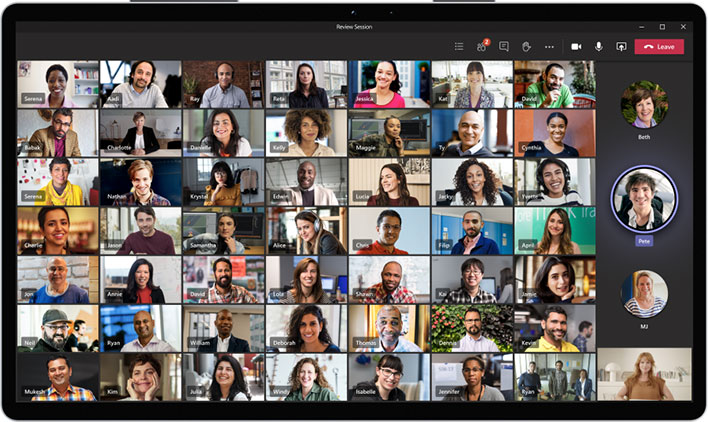Microsoft Teams Brings A Slew Of New Features To Enhance Work From Home Video Calls

More people are working from home these days, and now more than ever there is a need for capable video conferencing software to stay productive. This has led to increased efforts by developers to amp up their software solutions. That includes Microsoft, which has added a bunch of updates to its popular Microsoft Teams software.
"As the global response to COVID-19 evolves, communities around the world have moved from an era of 'remote everything' into a more hybrid model of work, learning, and life. And as we all scramble to keep up, the future of work and education is being shaped before our eyes. At Microsoft, we’ve spent the last few months learning from our customers and studying how they use our tools," Microsoft says.
The result is what Microsoft calls a "reimagining of virtual collaboration," through Teams. Perhaps the biggest update is a new "Together Mode" that uses AI segmentation technology to digitally place collaborators in a shared background. The idea is to make it feel as though everyone is in the same room, despite obviously being spread out across cities, states, and even countries.
Microsoft said it optimized Together Mode to help people during the pandemic, and that it ideally works when each person is in front of a webcam in a different location. It's not for every occasion, though. For example, Microsoft says Together Mode is really suited for when you need to show physical content, like a whiteboard. It's also not optimized to share the screen with PowerPoint presentations.
Initially, this new mode is optimal for up to 49 people. It can still be appropriate for meetings with more than 49 people in its current state, but your mileage will vary.
Microsoft also introduced Teams displays, which is a category of all-in-one dedicated Teams devices feature an ambient touchscreen and a hands-free experience, courtesy of Cortana.
"Microsoft Teams displays bring together your favorite Teams features: chat, meetings, calls, calendar, and files into a single device, promoting human connection in the remote workplace. With Teams displays, you can enjoy a high-quality microphone, camera, and speakers (or Bluetooth headset) for a reliable calling and meeting experience," Microsoft says.
Users can ask Cortana to join and present in meetings, dictate replies in Teams chat, and so forth. The first device to fall into this category will be Lenovo's ThinkSmart View, which will debut in the US later this year.
The other big addition is the introduction of touchless meeting experiences. While many people are working remotely, some are returning to their worksites and utilized shared spaces. With that in mind, Microsoft has built a new room remote in the Teams mobile app. This gives users access to additional meeting controls, such as the ability to leave a meeting, mute and unmute the room, adjust audio volume, and turn cameras on and off.
These are the big ones, though Microsoft has updated Teams with a host of other features as well, including a set of enhancements it is calling "dynamic view," various video filters, live reactions (because non-verbal cues like smiles and head nods might not be noticeably in a Teams meeting), chat bubbles, speaker attribution for live captions and transcripts, support for up to 1,000 participants (and up to 20,000 view-only meetings), suggested replies, and various other minor (but appreciated) updates.

